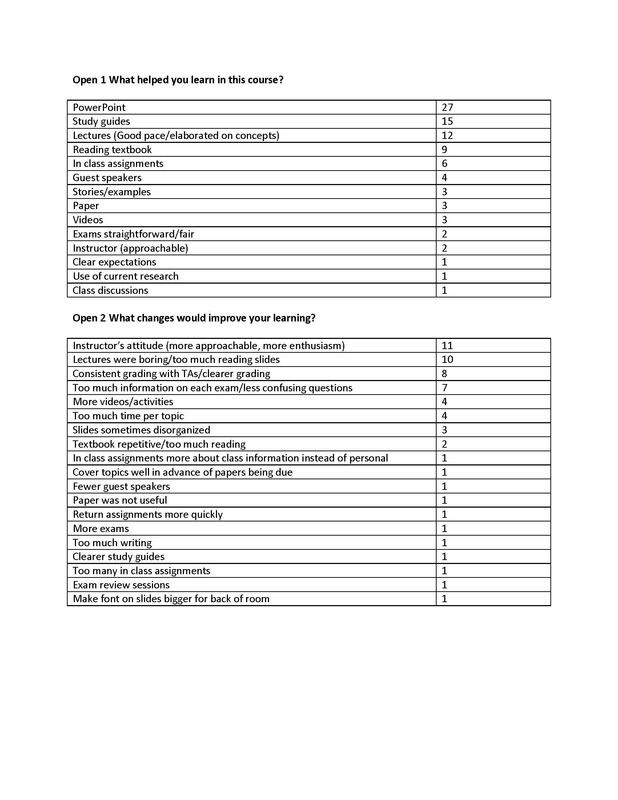I’m a dweller. I have always had trouble separating myself from negative comments, and tend to take them personally. It could be considered a good trait, I suppose, in that I explore possible reasons for any negative response, and consider ways I might change my course in response. But over the years what I realized is that I would sometimes focus so much on one or two positive responses that I would work too hard to change my class in reaction to those perspectives, even if they disagreed with the majority of the class. I found the most negative ones the most salient and memorable, and would focus my energy and attention there.
Through the years in my roles as professor-in-charge of the undergraduate and now graduate program, I have worked with a number of other faculty trying to summarize written responses to SRTE’s. So, I wanted to share what I find most helpful, particularly in courses with many students.
Basically, I informally and quickly code the responses. Our SRTE’s have 2 open-ended questions: 1) What helped you learn, and 2) What changes would improve your learning. I open up Excel and start reading through the responses. I do a separate tally for the 2 different questions. So starting with the responses to question 1, I start reading each response, and very briefly summarize any main point. For instance, if someone wrote “The articles and 4-pointers really supplemented the lectures nicely” I would create a new row called “articles” and one called “4-pointers” and then each would get 1 tally mark. Then when someone else wrote “the weekly four pointers that were assigned in the course helped relate classroom material to outside world and readings” I would give “4-pointers” a second tally mark. Unhelpful comments (e.g., the TA was hot; I wish she let us meet outside) as well as hostile comments without constructive feedback (e.g., I hate her and wish she had never been born [note: I made that one up!]) don’t make it into the count.
By the end, I have a helpful count of what students liked about the course, and what they wanted to change. I can sort by frequency of responses, allowing a visual way to see which comments occurred frequently and which did not. Often in doing so, I have realized that the comment that stuck with me was a very infrequent perspective, and was salient only because of the emotion attached to it.
The other great thing about this method is that I do not need to sort through the actual responses in the future. When I get ready to teach this course again, I can look at the emotion-free version, and so I don’t get defensive in reading the feedback.
I have used this method both for my own teaching, and in my PIC role for others, and I always find it brings clarity to what went well and did not go well. Here’s an example taken from various pieces of feedback across different classes so you can see what one looks like.


 RSS Feed
RSS Feed
